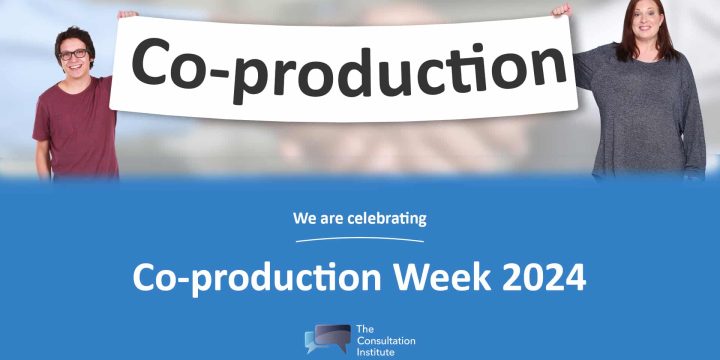News & Insights
Deregistered college loses case but raises consultation questions for regulators
Introduction
It is the nature of regulation that it sometimes becomes necessary for decisions to be taken and for organisations to lose their status and sometimes their livelihoods. This case highlights the issues that can arise when a comprehensive consultation on a new regulatory framework still failed to assuage the grievance of a body which felt it had been dealt with differently from the way in which the original consultation had suggested. After a full discussion of this case, we offer some important advice for regulators.
Last week saw the delivery of the judgment in the case of R (Bloomsbury Institute) v the Office for Students [2020] EWHC 580 (Admin). The case itself is a complicated (and lengthy) appeal against the decision of the Office for Students (OfS) to refuse the Bloomsbury Institute’s application for registration. The registration process came about when the responsibility for designating providers of higher education services was moved from the Secretary of State for Education to the new Office for Students created in 2017. Designation and registration are important as without them the students of a higher education provider cannot secure loans from the Student Loan Company, and therefore must be entirely self-funding. Given the high costs associated with higher education, in essence this means that a denied registration will prevent the provider from sustainably operating and likely force them to close. This applies doubly in the case of organisations such as the Bloomsbury Institute which specialises in serving students somehow disadvantaged by their background, whether that is because of limited household income, race, disability, or a wide variety of other factors.
The decision to refuse registration was taken primarily on the grounds that Bloomsbury were deemed not to have met two of the criteria for registration, primarily ‘Condition B3’, which related to two things: ‘continuation rates’, as in the number of students continuing from year one to year two of study; and ‘progression rates’ relating to progression to professional employment or post-graduate study. Bloomsbury challenged this assessment on many grounds, amongst which was that the OfS had assessed their compliance using pre-determined numerical thresholds that were applied universally to providers, that they erred in law by relying on confidential Decision-Making Guidance which contained the alleged pre-determined thresholds which the Institute claimed should have been publicly available and consulted on, that in using these thresholds the OfS breached the Public Sector Equality Duty, and that the use of these thresholds breached the OfS’ published Regulatory Framework, which had been consulted upon. The OfS defence was that it consulted on all matters related to registration that it was required to do so, and that the duty to consult did not extend to thresholds which were an internal procedural matter. Many other grounds were adopted as part of the challenge, but we have restricted our summary to those we will discuss.
What then is the relevant background law? The duties of the OfS are set out in the piece of legislation that founded the organisation, the Higher Education and Research Act 2017 (HERA). The registration procedure under challenge is set out in s.4 of the Act, with relevant detail about ‘initial and general ongoing registration conditions’ set out in s.5 as follows:
“5 The initial and general ongoing registration conditions
(1) The OfS must determine and publish-
(a) the initial registration conditions, and
(b) the general ongoing registration conditions.
(2) Different conditions may be determined-
(a) for different descriptions of provider;
(b) for registration in different parts of the register.
(3) The OfS may revise the conditions.
(4) If the OfS revises the conditions, it must publish them as revised.
(5) Before determining or revising the conditions, the OfS must, if it appears to it appropriate to do so, consult bodies representing the interests of English higher education providers which appear to the OfS to be concerned
(6) The OfS may, at the time of an institution’s registration or later, decide that a particular general ongoing registration condition is not applicable to it.
(7) Where the decision is made after the institution’s registration, the OfS must notify the governing body of the institution of its decision.”
s.75 of the same act requires the publication of a Regulatory Framework for the OfS, giving guidance about how the OfS will perform its duties and about the ongoing registration conditions.
The Regulatory Framework document was consulted upon and subsequently published in February 2018, and contained the initial registration conditions, as well as detailing the OfS’ approach to regulation. The OfS approach included a statement about the ‘lead indicators’ that would be used to provide signals of change in a provider’s circumstances, but specified that “The OfS will not use crude ‘triggers’ or performance thresholds to monitor risk, preferring a more flexible approach that takes into account the context for an individual provider”. Condition B3, the condition under challenge, was detailed as follows:
a. A range of student outcomes indicators, broken down to show outcomes for students with different characteristics that include, but are not limited to:
i. Student continuation and completion rates.
ii. Degree and other outcomes, including differential outcomes for students with different characteristics.
iii. Graduate employment and, in particular, progression to professional and managerial jobs and postgraduate study.
In discussing the case the Court acknowledged that both parties agreed that there were two relevant statutory obligations to consult. Firstly, the requirement to consult on the Regulatory Framework contained in s. 75(8) of HERA, and secondly the duty in s. 5(5) to consult on the conditions to be applied for registration. The claimant also alleged that there was a further duty to consult arising from the Regulators’ Code, which the OfS had given an undertaking to comply with (despite said code not becoming legally binding until after the events in this case). The core of the challenge was that although the OfS consulted about the Regulatory Framework, they failed to consult on the confidential internal Decision-Making Guidance. There was, Bloomsbury alleged, sufficient difference in the approach of the Decision-Making Guidance and that which had been consulted upon and subsequently set out in the Regulatory Framework to render the consultation flawed.
The Court divided its discussion on the consultation-related grounds into two separate elements, firstly whether the approach actually followed in accordance with the internal guidance was in fact different from the approach that was consulted upon. The conclusion of the court on this ground was that the OfS had not materially deviated from the approach proposed in the consultation, and the consultation was not, as the claimant had alleged, misleading. There was no absolute use of the thresholds, and the OfS carried out a nuanced analysis of the thresholds, as well as an evaluation of other factors.
Secondly it considered whether the OfS should have given consultees more information about their approach, in particular about where the thresholds were set. This is a relatively straightforward Gunning 2 argument. Although the judge acknowledged that the specific thresholds were not set out in the consultation, she agreed with the defendant that the purpose of the relevant sections of HERA was not to require consultation on every single specific element of the assessment process, but rather on the broad terms of both the Regulatory Framework and the conditions that were to be adopted. This largely followed the ‘statutory context’ conclusion of Lord Reed in R (Moseley) v Haringey (2014). The consultation was therefore compliant with the relevant consultation requirements.
On the Public Sector Equality Duty submissions, the Court highlighted that not only was the OfS under that duty from the Equality Act 2010, but also a separate and similar (but not identical) duty from s. 2(1)(e) of HERA. Although the OfS had produced a detailed Equalities Impact Assessment when it adopted the Regulatory Framework, it had not done so when it then adopted the Decision-Making Guidance. The Court determined that in and of itself this did not breach either of the equalities duties, as the Decision-Making Guidance did not depart from the approach taken in the Regulatory Framework, and therefore the one Equalities Impact Assessment was sufficient to cover both documents. Further evidence was adduced that the OfS had continued to have due regard to their duties whilst compiling the Decision-Making Guidance. In light of this, the claimant submissions on the PSED were also rejected.
Although a large number of other grounds were also pleaded on non-consultation points, these were all rejected by the Court, handing victory to the OfS. Despite this, there are several important reminders to be taken from this case for regulators.
i. Be mindful of the difference between consulting on frameworks, and on the detailed application of frameworks
After Moseley, the statutory context under which you are undertaking your consultation has become even more important. In this case, the statutory context was ruled not to require consultation on every detail, but instead on the broad policy. This may not always be the same, and care should be taken, considering the statutory context that regulators work in to make sure that your consultation is to the right degree of detail and granularity.
ii. Be careful when you apply your framework, particularly if it uses numerical standards and benchmarks
It seems to be more and more frequent that the more technical aspects of consultations and rules are coming under scrutiny, and it provides a good reminder to be careful when you are applying standards and benchmarks, particularly to apply them in line with guidance. If it says the benchmark is absolute, apply it absolutely. If it says it should be applied contextually, remember to take that context into account.
iii. Ensure consistency between your externally published documents and internal guidance
Most regulators will have separate internal and external documents that together determine how officers and representatives take regulatory decisions. Ensuring that these match and internal decision-making guidance is in line with publicly available documents and policy that may well have been consulted upon is very important to prevent arguments that different standards are being applied.
iv. Consider whether you should consult on the detailed application of regulation
In this case, there had been no consultation on the actual values agreed for specific thresholds, and this was supported by the Court. However, the Judge noted that no legitimate expectation argument had been made, and it might well be wise for Regulators to ensure that organisations being reviewed know what is expected of them
v. Remember to provide consistent evidence that when taking decisions you have continued to have due regard to PSED, especially when decisions are separated by time and may be seen as separate decisions
The application of the PSED continues to be one of the most frequent grounds of challenge, and occurs in some form in the vast majority of the judicial reviews we see. It may be repetitious, but the fact that it comes up so frequently is a pertinent reminder of its importance, and of how vital it is to have good evidence that consistent attention has been paid to equalities issues.
vi. Remember to consider not only the general PSED, but also any specific statutory equalities duties you are under- they may not necessarily amount to exactly the same thing
In this case the OfS was under two separate and different equalities duties, which we might term the general PSED, and the duty specific to its functions in HERA. Although generally the PSED will form the starting point for considerations of whether you have complied, the specific duty still applies, and should also be considered when taking decisions.
Summary
Regulators should pay attention to this case. Although the facts are specific to higher education, it raises important questions as to when decision-makers should consult and protect themselves from this kind of legal challenge



